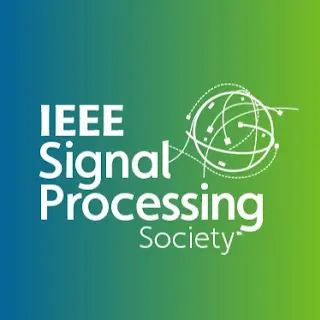Smoothing, Filtering and Prediction: Estimating the Past, Present and Future (2012)
Edited by Garry A. Einicke, InTech, 2012
 Description from the publisher
Description from the publisher: This book describes the classical smoothing, filtering and prediction techniques together with some more recently developed embellishments for improving performance within applications. It aims to present the subject in an accessible way, so that it can serve as a practical guide for undergraduates and newcomers to the field. The material is organized as a ten-lecture course. The foundations are laid in Chapters 1 and 2, which explain minimum-mean-square-error solution construction and asymptotic behavior. Chapters 3 and 4 introduce continuous-time and discrete-time minimum-variance filtering. Generalizations for missing data, deterministic inputs, correlated noises, direct feedthrough terms, output estimation and equalization are described. Chapter 5 simplifies the minimum-variance filtering results for steady-state problems. Observability, Riccati equation solution convergence, asymptotic stability and Wiener filter equivalence are discussed. Chapters 6 and 7 cover the subject of continuous-time and discrete-time smoothing. The main fixed-lag, fixed-point and fixed-interval smoother results are derived. It is shown that the minimum-variance fixed-interval smoother attains the best performance. Chapter 8 attends to parameter estimation. As the above-mentioned approaches all rely on knowledge of the underlying model parameters, maximum-likelihood techniques within expectation-maximisation algorithms for joint state and parameter estimation are described. Chapter 9 is concerned with robust techniques that accommodate uncertainties within problem specifications. An extra term within Riccati equations enables designers to trade-off average error and peak error performance. Chapter 10 rounds off the course by applying the afore-mentioned linear techniques to nonlinear estimation problems. It is demonstrated that step-wise linearization can be used within predictors, filters and smoothers, albeit by forsaking optimal performance guarantees.
Please visit the book’s
website for more information.
 Description from the publisher: This book describes the classical smoothing, filtering and prediction techniques together with some more recently developed embellishments for improving performance within applications. It aims to present the subject in an accessible way, so that it can serve as a practical guide for undergraduates and newcomers to the field. The material is organized as a ten-lecture course. The foundations are laid in Chapters 1 and 2, which explain minimum-mean-square-error solution construction and asymptotic behavior. Chapters 3 and 4 introduce continuous-time and discrete-time minimum-variance filtering. Generalizations for missing data, deterministic inputs, correlated noises, direct feedthrough terms, output estimation and equalization are described. Chapter 5 simplifies the minimum-variance filtering results for steady-state problems. Observability, Riccati equation solution convergence, asymptotic stability and Wiener filter equivalence are discussed. Chapters 6 and 7 cover the subject of continuous-time and discrete-time smoothing. The main fixed-lag, fixed-point and fixed-interval smoother results are derived. It is shown that the minimum-variance fixed-interval smoother attains the best performance. Chapter 8 attends to parameter estimation. As the above-mentioned approaches all rely on knowledge of the underlying model parameters, maximum-likelihood techniques within expectation-maximisation algorithms for joint state and parameter estimation are described. Chapter 9 is concerned with robust techniques that accommodate uncertainties within problem specifications. An extra term within Riccati equations enables designers to trade-off average error and peak error performance. Chapter 10 rounds off the course by applying the afore-mentioned linear techniques to nonlinear estimation problems. It is demonstrated that step-wise linearization can be used within predictors, filters and smoothers, albeit by forsaking optimal performance guarantees.
Please visit the book’s website for more information.
Description from the publisher: This book describes the classical smoothing, filtering and prediction techniques together with some more recently developed embellishments for improving performance within applications. It aims to present the subject in an accessible way, so that it can serve as a practical guide for undergraduates and newcomers to the field. The material is organized as a ten-lecture course. The foundations are laid in Chapters 1 and 2, which explain minimum-mean-square-error solution construction and asymptotic behavior. Chapters 3 and 4 introduce continuous-time and discrete-time minimum-variance filtering. Generalizations for missing data, deterministic inputs, correlated noises, direct feedthrough terms, output estimation and equalization are described. Chapter 5 simplifies the minimum-variance filtering results for steady-state problems. Observability, Riccati equation solution convergence, asymptotic stability and Wiener filter equivalence are discussed. Chapters 6 and 7 cover the subject of continuous-time and discrete-time smoothing. The main fixed-lag, fixed-point and fixed-interval smoother results are derived. It is shown that the minimum-variance fixed-interval smoother attains the best performance. Chapter 8 attends to parameter estimation. As the above-mentioned approaches all rely on knowledge of the underlying model parameters, maximum-likelihood techniques within expectation-maximisation algorithms for joint state and parameter estimation are described. Chapter 9 is concerned with robust techniques that accommodate uncertainties within problem specifications. An extra term within Riccati equations enables designers to trade-off average error and peak error performance. Chapter 10 rounds off the course by applying the afore-mentioned linear techniques to nonlinear estimation problems. It is demonstrated that step-wise linearization can be used within predictors, filters and smoothers, albeit by forsaking optimal performance guarantees.
Please visit the book’s website for more information.
